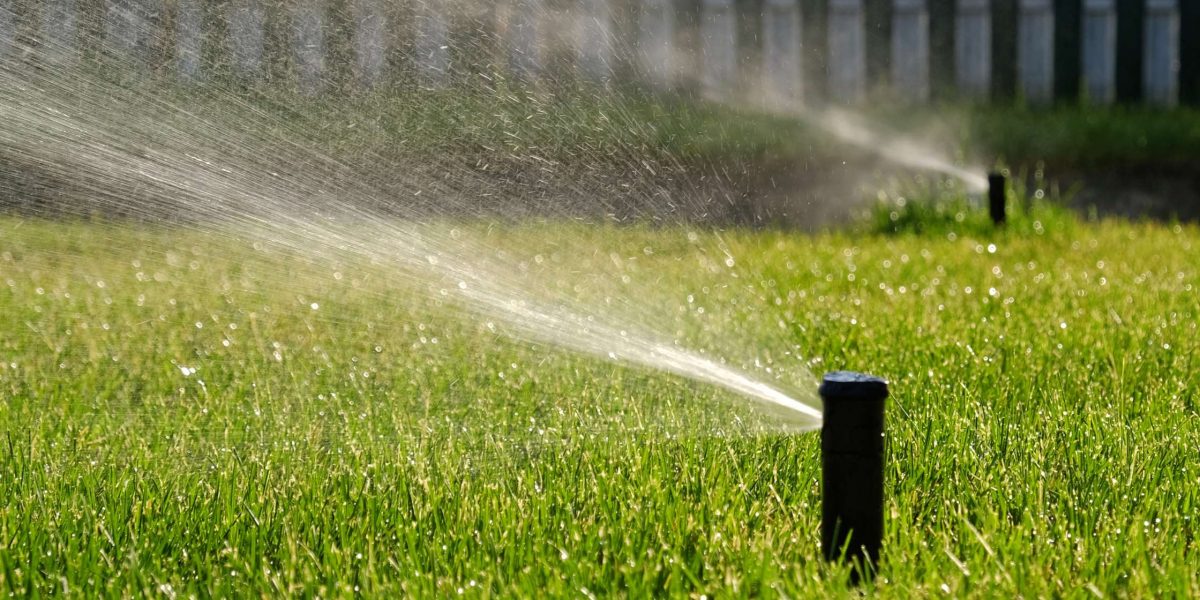As the summer heat sets in, keeping your lawn lush and green in the San Antonio area can become a challenge. Proper irrigation is key to maintaining a healthy lawn during these hot months. Here are some best practices for watering your lawn effectively this summer, including ideal watering times and techniques to ensure your grass stays vibrant and resilient.
Ideal Watering Times
Early Morning Watering Watering your lawn early in the morning, between 4 AM and 10 AM, is the best practice. The temperatures are cooler, and the wind is usually calmer, which means less water is lost to evaporation. Additionally, watering early allows the grass to dry out during the day, reducing the risk of disease caused by prolonged moisture.
Avoid Midday Watering Watering during the hottest part of the day, typically between 10 AM and 4 PM, is less effective. The high temperatures and increased evaporation rates mean much of the water you apply will be lost before it reaches the roots. This can lead to inefficient water use and potential stress for your lawn.
Evening Watering While not ideal, watering in the early evening can be an alternative if morning watering isn’t possible. However, be cautious as watering too late can leave your lawn wet overnight, creating an environment conducive to fungal diseases.
Effective Watering Techniques
Deep and Infrequent Watering One of the most important principles of summer irrigation is deep and infrequent watering. This encourages the grass roots to grow deeper into the soil, making them more resilient to drought and heat. Aim to water your lawn deeply, providing about 1 to 1.5 inches of water per week, including rainfall. This usually means watering for longer periods but less frequently, such as twice a week.
Use of Sprinklers and Irrigation Systems
Sprinkler Systems
- Adjust Sprinklers: Ensure your sprinklers are correctly adjusted to avoid watering sidewalks, driveways, or streets. Proper adjustment ensures water is applied evenly across your lawn.
- Overlap Coverage: Arrange your sprinklers so there is some overlap in coverage to prevent dry spots.
Drip Irrigation Systems
- Targeted Watering: Drip irrigation systems are excellent for targeted watering of specific areas, such as flower beds or newly planted lawns. They deliver water directly to the roots, minimizing evaporation and runoff.
Smart Irrigation Controllers
- Weather-Based Adjustments: Consider using smart irrigation controllers that adjust watering schedules based on weather conditions, soil moisture levels, and plant needs. These systems optimize water use and can lead to significant water savings.
Lawn Care Practices to Complement Irrigation
Mowing Techniques
- Mow High: Keep your lawn mower blades high, leaving your grass at a height of about 3 to 4 inches. Taller grass shades the soil, reducing evaporation and promoting deeper root growth.
- Regular Mowing: Mow regularly to maintain optimal grass height, but avoid cutting more than one-third of the grass blade at a time to prevent stress.
Soil Aeration
- Improve Absorption: Aerate your lawn in the spring or early summer to improve water absorption. Aeration involves creating small holes in the soil to allow water, air, and nutrients to penetrate the grassroots more effectively.
Mulching
- Retain Moisture: Apply a thin layer of mulch to help retain soil moisture, regulate temperature, and reduce weed growth. Organic mulches, such as grass clippings or compost, can also add nutrients to the soil as they decompose.
Monitoring and Adjusting
Regular Inspection
- Check for Dry Spots: Regularly inspect your lawn for dry spots or areas where the grass appears stressed. Adjust your watering patterns or sprinkler placements accordingly.
- Soil Moisture: Use a soil moisture meter to check the moisture levels in the root zone. This can help you determine if your lawn is receiving adequate water.
Adjust for Weather Conditions
- Adapt to Changes: Be prepared to adjust your watering schedule based on changing weather conditions. Increase watering during hot, dry spells and reduce it during periods of rain.
Conclusion
Maintaining a lush lawn during the summer in the San Antonio area requires diligent irrigation practices and complementary lawn care techniques. By watering deeply and infrequently, choosing the right times to water, and utilizing efficient irrigation systems, you can ensure your lawn remains healthy and green even during the hottest months. For more personalized advice and professional irrigation services, contact Lawn D.R. Landscaping. We’re here to help you achieve the perfect summer lawn.

